Standard Room or upgrade room as per request
September to November
Duration: 07 Nights / 08 Days
Breakfast
Accommodation:
Rome: Hotel Siviglia OR Similar
Florence: Hotel Corona d’Italia OR Similar
Venice: Hotel Carlton Capri OR Similar
Milan: Hotel Ibis Centro OR Similar
Tour highlights:
Half day Vatican Museum, Sistine Chapel & St. Peters Basilica on SIC
Half day Colosseum, Roman Forum, Palatine hill on SIC
Florence City tour on SIC
read more close
Visit to Murano, Burano, Torcello island on SIC
Walking tour of Venice & Doge’s Palace
Hop on Hop off City Sightseeing tour (24-hour Ticket), Milan
Standard Room or upgrade room as per request
September to November
Duration: 6 Nights/7 Days
Breakfast
Accommodation:
Rome: San Marco Hotel or Centre 3 or similar
Florence: Delle Nazioni or San Giorgio E Olimpic or Similar
Venice: Hotel Centrale or Hotel Aaron or Alexander or Similar
read more close
Tour highlights:
Imperial Rome & Colosseum tour
Full Day tour of Capri with Blue Grotto
Half Day excursion to Pisa
Gondola ride
Half-Day tour of the three islands Murano, Burano and Torcello
Standard Room or upgrade room as per request
Best time to Travel: September to November
Duration: 13 Nights/14 Days
Breakfast
Accommodation:
Rome: San Marco Hotel or Centre 3 or similar
Venice: Hotel Centrale or Hotel Aaron or Alexander or Similar
Milan: ibis Milano Centro or Bandb Hotel Milano Central Station or Similar
Nice: Best Western Hotel Roosevelt or Campanile Nice Centre Acropolis or Similar
Paris: Bellevue Montmartre or Apollo Opera or Similar
read more close
Barcelona: Hotel Ramblas Barcelona or Leonardo Boutique Hotel Barcelona Sagrada Familia or Similar
Madrid: Ibis Styles Madrid Prado or Sterling Hotel or Tryp Madrid Centro or Similar
Tour highlights:
Half Day Colosseum, Roman Forum and Palatine Hill tour
Full Day tour of Capri
Gondola Serenade Tour
Half day excursion to Murano, Burano & Torcello Islands
Milan Hop-on Hop-off Bus Tour
Le Grand Tour of Nice city
Full Day tour to Disneyland Paris (1 day 2 park) tour
Half Day Barcelona Highlights tour
Madrid city tour
Standard Room or upgrade room as per request
Best time to Travel: May to September
Duration: 8 Nights/9 Days
Breakfast
Accommodation:
Rome: San Marco Hotel or Centre 3 or similar
Florence: Delle Nazioni or San Giorgio E Olimpic or Similar
Venice: Hotel Centrale or Hotel Aaron or Alexander or Similar
Milan: ibis Milano Centro or Bandb Hotel Milano Central Station or Similar
read more close
Tour highlights:
Half Day Colosseum, Roman Forum and Palatine Hill Tour
Half Day excursion to Pisa
Gondola Serenade Tour
Half-Day tour of the three islands Murano, Burano and Torcello
Half Day Grand Tour of Milan
Standard Room or upgrade room as per request
Best time to Travel: September to November
Duration: 06 Nights / 07 Days
Meal: Breakfast
Accommodation:
Chamonix - Héliopic Hôtel & Spa or similar
Como - Palace Hotel or similar
Milan - Residence Studio Inn Centrale or similar
Tour Highlights:
Visit Chamonix, France
Aiguille du Midi Excursion in Chamonix, France
Visit Lake Maggiore, Italy
Visit Como, Italy
read more close
Visit Bellagio, Italy
Visit Milan, Italy
Visit Verona
Visit Lake Garda
Standard Room or upgrade room as per request
Best time to Travel: May to September
Duration: 10 Nights/11 Days
Breakfast
Accommodation:
Rome: San Marco Hotel or Centre 3 or similar
Florence: Delle Nazioni or San Giorgio E Olimpic or Similar
Venice: Hotel Centrale or Hotel Aaron or Alexander or Similar
Nice: Best Western Hotel Roosevelt or Campanile Nice Centre Acropolis or Similar
Paris: Bellevue Montmartre or Apollo Opera or Similar
read more close
Tour highlights:
Rome City Tour
Half Day excursion to Pisa
Gondola Serenade tour
Half-Day tour of the three islands Murano, Burano and Torcello
Nice Le Grand Tour
Paris Seinorama Tour
Full Day excursion to Disneyland Paris Park- 1 Day 2 Park tour
Standard Room or upgrade room as per request
Best time to Travel: April to June
Duration: 5 Nights/6 Days
Breakfast
Accommodation:
Como: Hotel Plinius OR Similar
Venice: Hotel Carlton Capri OR Similar
Milan: Hotel Ibis Centro OR Similar
Tour Highlights:
Gondola Ride (with other traveler)
Visit Murano, Burano, Torcello island on SIC
Enjoy A Luxury Travel Experience
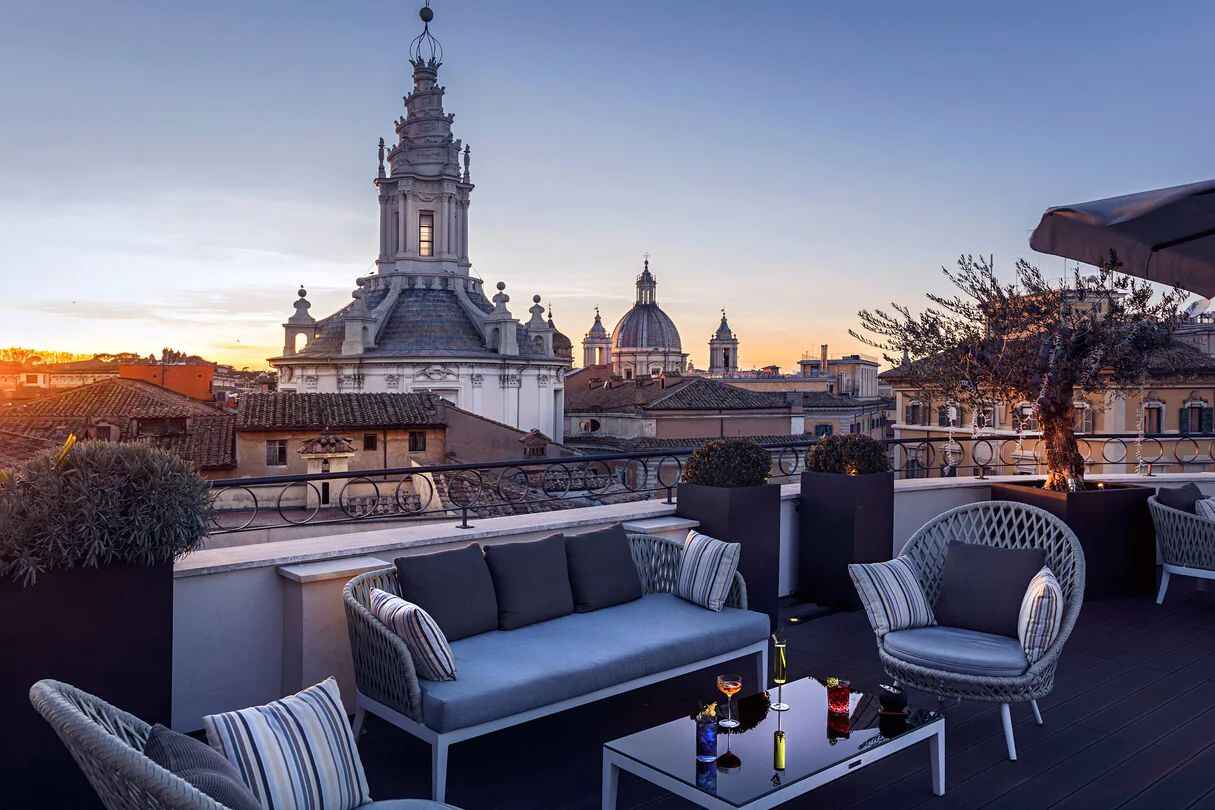
The Pantheon Iconic Rome Hotel Autograph Collection
Rome
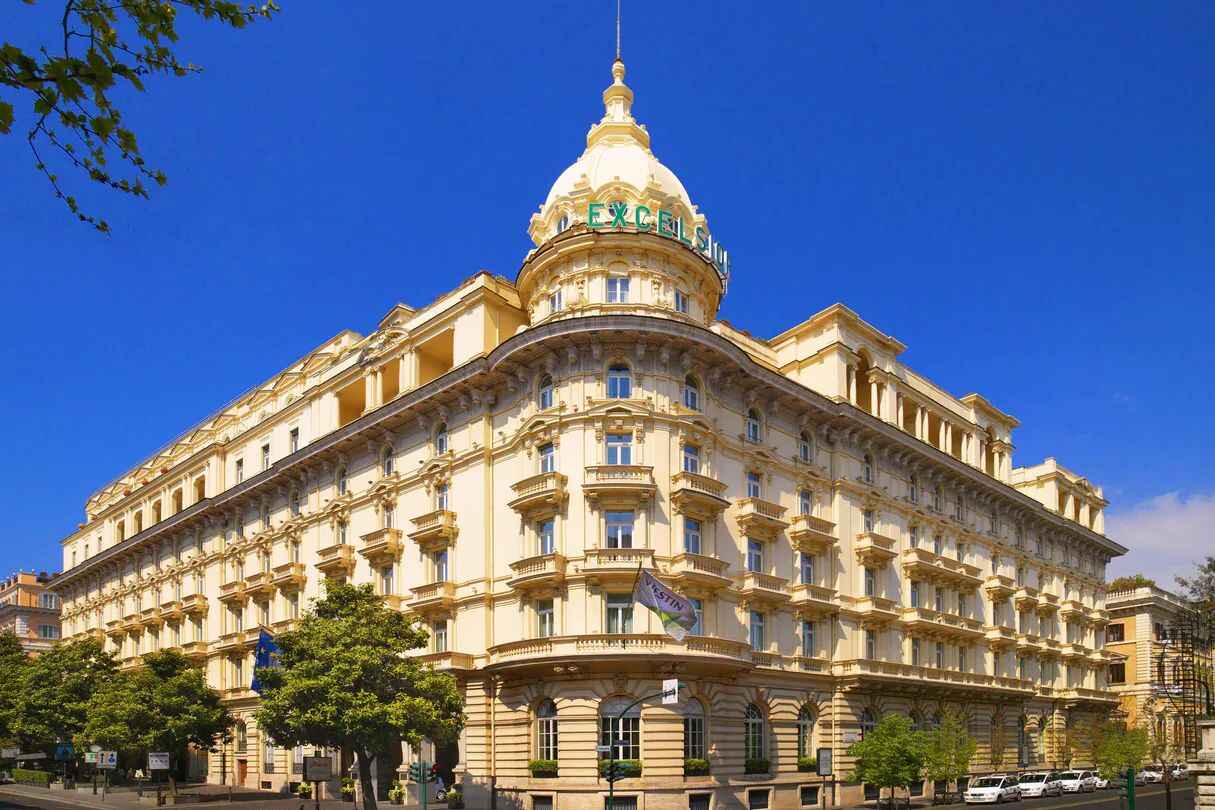
The Westin Excelsior Rome
Rome

The St. Regis Rome
Rome
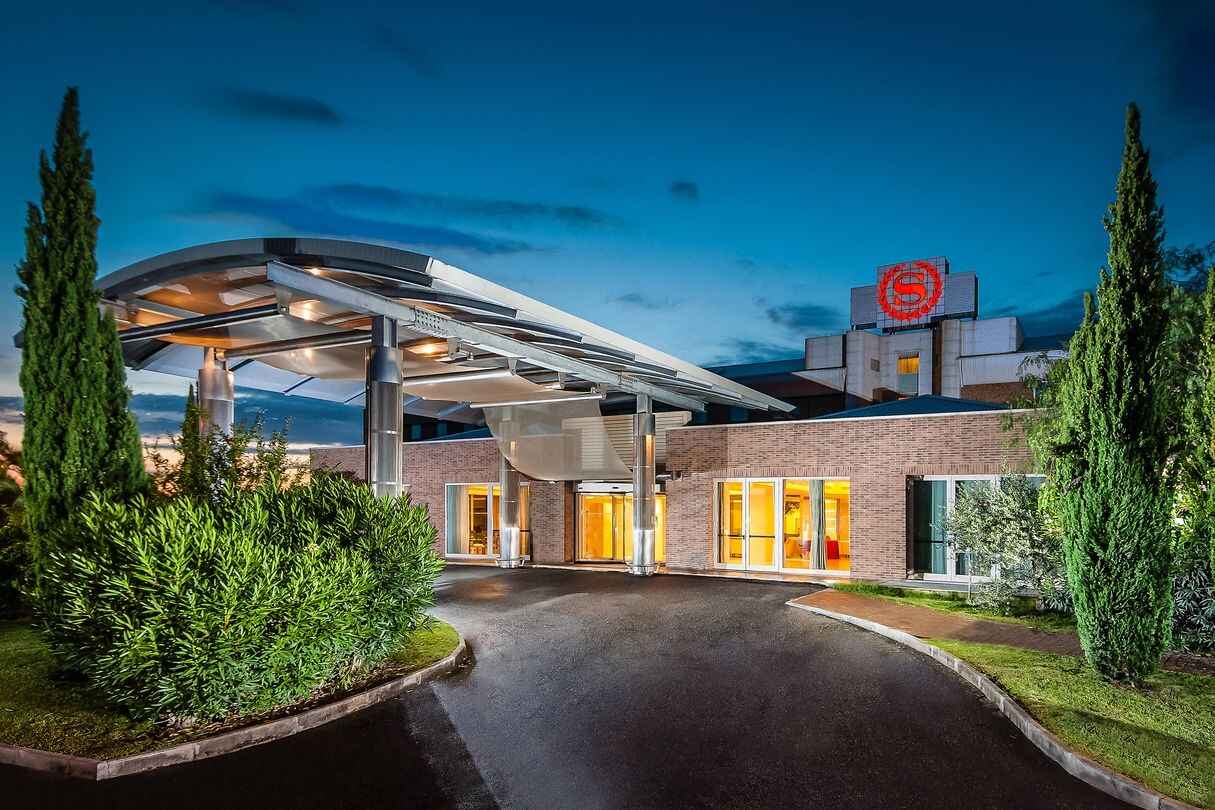
Sheraton Parco De Medici Rome Hotel (4 Star)
Rome

Le Méridien Visconti Rome (4 Star)
Rome
-
SightseeingThey say 'when in Rome, do as the Romans do', but in a city filled with more than two millennia of history, there's much to do and even more to see. Among Rome's more renowned historic attractions are the Colosseum, the Roman Forum and the Pantheon. The Vatican, seat of the Roman Catholic Church, lies within Rome's borders and alongside is the Sistine Chapel with its famously painted ceiling. Once the seat of the mightiest empire in existence, the culture of Rome has shaped the face of art, architecture, law, warfare, literature and language in the Western world today; in fact, some refer to Rome as the 'cradle of Western civilisation'.Most of the historic sites are within walking distance of one another, and it is advisable to walk and take in the city's architecture while the frantic road traffic passes you by. Otherwise, a taxi or bus is the recommended means of travel. A bustling metropolis, Rome is constantly abuzz with tourists and locals; however, in the late summer, around August, a short holiday window sees locals heading out of the city and providing a little congestive relief.As of January 2011, the local authorities in Rome implemented a supplementary 'tourist tax' charged on all museum and monument entrance fees. All visitors who do not hold a valid Rome ID will be charged the small extra fee. The revenue collected will be used on the maintenance and upkeep of the city's treasured sights. The same tax is added to hotel fees: tourists to the Eternal City are required to pay a supplementary amount per night for stays in hotels; the amount varies depending on the quality of the accommodation.Separated from central Rome by the Tiber River, Trastevere is a picturesque medieval neighbourhood characterised by a quirky Bohemian atmosphere. Its narrow cobblestone streets are lined with overhanging flower boxes and washing lines and are home to numerous cafes, boutiques, pubs and restaurants. The area has long attracted artists, famous people and expats, and is a charming place to explore, having escaped the grand developments of central Rome. Trastevere looks like most foreigners expect an Italian village to look, which is partly why tourists find it so enchanting; the photographic opportunities are endless! There are some glorious old churches in the area, perhaps the most lovely of which is the Basilica of Santa Maria, which has wonderful mosaics and draws many visitors into the area for the first time. The best way to explore is just to wander aimlessly and see where your feet take you. It is quite different at night time, when it seems more elegant, and it is worth visiting more than once. As a result of the areas popularity and bohemian atmosphere beggars and scam artists can be a problem and travellers should be wary of unwanted attention.Capitoline Hill was the original capital of Ancient Rome and continues to serve as the seat of the city's government. It is the smallest, but also the most famous, of the Seven Hills of Rome, and once housed the Senate. The main feature of the area is Michelangelo's Piazza del Campidoglio, a testimony to the superiority of Renaissance town planning. The piazza is bordered by three palaces: the Palazzo dei Conservatori and the twin structures of the Palazzo dei Senatori and Palazzo Nuovo, which house the Musei Capitolini, containing the largest collection of Classical statues in the world. Among the notable statues found here are the Dying Gaul and the Satyr, the Capitoline Wolf with Romulus and Remus, and the Spinario. Paths cut along the side of the hill from the Campidoglio allow visitors to enjoy breathtaking panoramic views of the ancient sites of the Forum and Colosseum. Exploring this historic area is a must for anybody interested in ancient Rome and the sense of age and power is thrilling. Although the buildings are not all old the hill gives an amazing sense of what it must have been like during the peak of the Roman Empire. The steps to the top can be a bit daunting but the climb is well worth the effort, and there is access for disabled visitors.The site of Ancient Rome's commercial, political and religious centre rests in the valley between the Capitoline and Palatine hills. The Forum's main thoroughfare, Via Sacra, slices through the old market square and former civic centre. To make sense of the ruins and relics of the old Republic, it is helpful to consult a map of the area. Some of the best-preserved and most notable monuments include the impressive Arch of Septimus Severus - a construction designed to celebrate Roman victory over the Parthinians - and the former atrium of the House of the Vestal Virgins, and the Temple of Vesta. Also of note are the Temple of Antoninus and Faustina, and the Arch of Titus, built to celebrate Titus' destruction of Jerusalem in 70 AD. To the right of the arch are stairs snaking up the Palatine Hill, through a series of terraces to the Farnese gardens. The scented avenue, festooned with roses and orange trees, gives way to a magnificent vista over the Forum. Negotiating your way through the ruins is thrilling but can be confusing and this attraction is best tackled with a guide or at least a good map. There are some really wonderful guides available and they enrich the experience with information and context.Known to be one of the most impressive buildings of the Roman Empire, the Colosseum was the largest structure of its era. Emperor Vespasian, founder of the Flavian Dynasty, started construction of the Colosseum in 72 AD and it was completed in 80 AD. This enduring symbol of ancient Rome, which used to be called the Flavian Amphitheater, tenaciously clings to its foundations as the site of former gladiatorial conquests and brutal public entertainment. Its architecture boasts an impressive array of Doric, Ionic and Corinthian columns and an underground network of cells, corridors, ramps and elevators that were used to transport animals from their cages to the arena.It could once hold a crowd of 55,000 spectators and had 80 entrances. Emperors staged days of free public entertainment in this vast building, and not all the games were brutal and blood-thirsty - they often began with comedic acts and exotic animal displays, but did invariably include gladiatorial fights to the death. The magnificence of the original structure has been eroded through the years by pillaging and earthquakes so that only a skeletal framework remains; however, the sense of history the Colosseum is still able to evoke is truly awe-inspiring and it remains one of Rome's knock-out attractions, featuring on the bucket lists of many a traveller.The stately Pantheon is one of the world's most inspiring architectural designs; almost two thousand years after it was built, the Pantheon's dome is still the world's largest unreinforced concrete dome. Built as a temple to the Roman gods by Hadrian in 120 AD, its perfectly proportioned floating dome rests seductively on sturdy marble columns. The only light source is the central oculus, which was used by the Romans to measure time (with the aid of a sundial) and the dates of equinoxes and solstices. The sunlight pouring through the oculus and illuminating the floor in the otherwise dark church is quite a sight. The south transept houses the Carafa Chapel and the tomb of Fra Angelico rests under the left side of the altar. The Pantheon is still an active place of worship and Christian services are conducted regularly.Visitors should show respect and keep their voices down; this is not difficult as the interior inspires awe and humility which is perhaps why the atmosphere is almost always peaceful and quiet despite the crowds of people that visit. Photography is allowed and there are audio guides available for hire. One of the most iconic buildings in the world and certainly among Rome's most famous attractions, the Pantheon is a must-see which seldom leaves visitors unaffected.The graceful Spanish Steps, built in 1725, elegantly curve their way from the Piazza di Spagna to the Church of Santa Trinit dei Monti, a pastel-tinted neoclassical building. The shopper's paradise of Via Condotti leads back from the Spanish steps to Via del Corso, and during spring the steps are decorated with pink azaleas. At the foot of the steps lies Bernini's boat-shaped Barcaccia Fountain, and to the right is the unassuming Keats-Shelley Memorial House. For lovers of the Romantic poets the steps have become a sort of pilgrimage site as a result of the Memorial House. The steps and piazza can get really crowded but the bustle is actually part of the attraction in this case: the Spanish Steps are perfect for settling down to some people-watching and soaking up the atmosphere of the city. The steps are iconic and if you do walking tours of Rome you are almost guaranteed a stop here. Lots of artists and musicians perform in the area which gives it a festive feel, but beware of tourist scams, like men approaching pretty women to give them flowers and then demanding payment. If you want to take photographs it's best to arrive early in the morning before the crowds do.The tiny Piazza di Trevi has been immortalised through this fountain, built for Pope Clement XII. Arguably the most famous and most beautiful fountain in all of Rome, and the largest Baroque fountain in the city, the statues adorning this watery display represent Abundance, Agrippa, Salubrity, the Virgin and Neptune guided by two Tritons. The fountain marks the terminal point of an ancient aqueduct that supplied Rome for more than four hundred years. The story of the discovery of the spring of fresh water channelled into this aqueduct is represented on the fountain's facade.Tossing a coin into the fountain (over your shoulder, with your back turned to the water) is supposed to guarantee a return trip to Rome. This wellknown myth has ensured that thousands of euros are thrown into the fountain every day by tourists desperate for a chance to return; the money is used for charitable projects so visitors are at least supporting a good cause, although often unknowingly. There are regular attempts to steal money out of the fountain as well! The Trevi Fountain has been immortalised in many films and has become a top attraction in Rome. The best time to visit is at night when it is stunningly lit up.The Basilica lies above the reputed site of St. Peter's tomb. It has an overwhelming interior, containing notable sculptures including Michelangelo's Pieta, which is protected by bulletproof glass since the damaging attack on it in 1972. In the central aisle stands Arnolfo da Cambio's bronze statue of St Peter, its foot worn down by the constant flow of pilgrims' kisses. Proudly resting above the papal altar is Bernini's Throne of St Peter. The Vatican Grottoes, containing papal tombs, can be reached by steps from the statue of St Longinus. The Necropolis is located one level below the grottoes. This is the legendary site of St Peter's tomb and advance permission has to be obtained to view it.Tours of the Necropolis, called the Scavi Tour, take about 90 minutes and are fascinating but must be booked well in advance. Children under 11 are not permitted on the tour. A strict dress code is in place for St Peter's Basilica and no shorts, bare shoulders or miniskirts are allowed (for men and women). There are frequent religious services at the Basilica which may disrupt visiting times. St Peter's Basilica is one of the most famous religious attractions in the world and even from a secular perspective is breathtakingly impressive, with enough art and history on offer to impress even the most experienced of travellers.The Vatican City is a remarkable entity in that it is an independent state administered by the Roman Catholic Church, and one of the world's richest countries. The population of this enclave doubles during the working week as residents from Rome cross into the Vatican City to work within its boundaries. Scandal and intrigue has somewhat tarnished the papacy's image over the years, but this does not detract from the magnificence of the art collections housed within its buildings, or the passion the city inspires in the many pilgrims who flock to its holy sites. Pope Francis has brought the Vatican back into the limelight in many positive ways. The must-see attractions when on holiday in the Vatican City include St Peter's Basilica, the Vatican Museums, and the Sistine Chapel.The Sistine Chapel, one of Italy's most popular attractions, is known for the famous ceiling, painted by Michelangelo, which looms above the frescoes on the side walls, painted by an illustrious team of artists that included Botticelli, Ghirlandaio, Roselli, Pinturicchio, Signorelli and della Gatta. The altar wall is covered by Michelangelo's Last Judgement, revealing the figure of Christ hovering above centre and flanked by Mary and other saintly figures. The chapel is justified in its fame and leaves travellers breathless; it is a profoundly special place to visit.The Vatican Museums provide access to one of the world's greatest collections of art. The galleries stretch over four miles (6km), and include the magnificent Raphael Rooms, the Etruscan Museum, and the Pio-Clementino Museum, which boasts the world's largest collection of Classical statues.The Basilica of St John Lateran was built in the 4th century by Constantine the Great and was the first church built in Rome. It is the cathedral of the Diocese of Rome, and as such ranks above all other Roman Catholic churches, even St Peter's Basilica in the Vatican. It is the official ecclesiastical seat of the Pope, and it is here that he celebrates Mass on certain religious holidays. The building has suffered much damage in the past and has been rebuilt several times, leaving only fragmented parts of the original church. The present building is characterised by its 18th-century façade and contains several important relics, a 13th-century cloister and an ancient baptistery. Inside are numerous statues, paintings, the High Altar that can only be used by the Pope, and a cedar table that is said to be the one used by Christ at the Last Supper. Across the street is one of the holiest sites in Christendom, visited by pilgrims from around the world: the Palace of the Holy Steps, believed to be the 28 marble steps originally at Pontius Pilate's villa in Jerusalem, that Christ climbed the day he was brought before Pilate. They have been in Rome since 1589.Rome is a busy, crowded city and it can be difficult to find some peace and quiet, or open spaces for exercise. The best place to go to get some fresh air and a break from traditional sightseeing is the Villa Doria Pamphili, which is the largest landscaped public park in Rome and a wonderful place to spend a few hours. The park is huge with streams, a lake, lots of shaded areas and plenty of open grassy spaces; perfect for an early morning jog or stroll. The park is also ideal if you are travelling to Rome with kids because it provides a lovely natural outdoor area for family picnics and games, allowing children to blow off some steam.There are playgrounds, a skating rink and soccer fields to enjoy, and pony rides around the Villa Doria Pamphili are also great fun. There is a little restaurant for refreshments as well. The 17th-century villa, which gives the park its name, and features landscaped gardens, is not usually accessible to tourists but is interesting to see from the outside. The park is actually lovely all year, even in winter, though it is obviously at its best in good weather. Playgrounds and parks are hard to find in Rome which automatically makes Villa Doria Pamphili a big hit with families visiting the city.ClimateRome enjoys a Mediterranean climate, with mild winters and hot, dry summers. January is the coldest month in Rome, and July and August the warmest. The weather in Rome during summer (June to August) can be uncomfortably hot, with temperatures often exceeding 95°F (35°C) at midday, and locals tend to close up their businesses during August. Winter (December to February) is mild, with the average temperature in December hovering around 55°F (13°C). Heavy snowfall is rare but almost every winter there are light snow flurries in the city. Rain showers are possible any time of year but the drizzle is seldom very disruptive to visitors. The best time to travel to Rome is in the springtime, between March and May, when skies are blue and the weather warm. Autumn is also considered peak tourist season, as the months of September and October are very pleasant.
-
NightlifeThe nightlife in Rome is laid-back, in true Italian style. People like to sit at cafés or restaurants taking their time with lots of food, wine and coffee. Campo dei Fiori, the Piazza Navona area and Trastevere are some of the best places for bars and cafés, while the Testaccio and Ostiense districts are better for nightclubs. Roma C'è and TrovaRoma (free with La Repubblica newspaper) have information on nightlife in Rome. There are many wine bars and cafés near Campo de' Fiori, Piazza Navona and Via della Pace. Cafés in Trastevere attract visitors to see Piazza di Santa Maria's fountain and 12th-century church lit up at night, as well as occasional guitar performances.There are always spectacular nightclubs available for the real party animals in Rome, but some of them do close during August. When the clubs close for summer, there are numerous outdoor venues around town and near Ostia; outdoor festivities on Via di Monte Testaccio, in Testaccio, take centre stage and include food stalls and markets. The Teatro dell'Opera is home to the Rome Opera Ballet and opera is performed at the Baths of Caracalla's open-air ruins in July and August. Rock bands often perform at Stadio Flaminio and the Palazzo dello Sport.
-
RestaurantsRome is delicious and affordable when it comes to dining out, and while everyone in the world may claim to 'love' Italian food, you cannot really compare 'ordinary' pizza and pasta to the wonderful dishes you can sample in the nation's capital. Italian food prepared in the Italian tradition is strong in flavour, meagre in ingredients, and richer and higher in calories than the global imitations. The typical meal is accompanied by a bruschetta ammazzavampiri(garlic canapé) and grated cheeses. Not surprisingly, pastas and pizzas are provided in abundance, the local varieties of which are not to be missed. Red meat and seafood dishes in the international tradition are also on offer but are more expensive and come in less generous servings.There are three main types of restaurant in Rome: an osteriais an informal gathering-spot, serving basic spaghetti meals and some wine; t rattorieare more languid, bistro-style affairs, offering large meals in a homely setting; andristoranteoffer the more fancy and lavish silver spoon and wine-list dining experience. All three can be found in the popular districts of Centro Storico, along Via Cavour and around Stazione Termini. The Borgo district near the Vatican offers some of the cheapest dining options in Rome. Breakfasts in Rome, as in most of Italy, are minimal, and people rarely leave the house for their first meal of the day. The main event is lunch, which sees restaurants open between 1pm and 3pm - most locals enjoy their lunch breaks in three courses!
Name: La Rosetta
Address: Via della Rosetta 8 (Piazza Navona)
Website: www.larosetta.com
Possibly the best seafood restaurant in Rome, the cuisine at La Rosetta is world-class. A selection of marinated seafood appetizers, such as squid with ginger and French beans, is the best way to appreciate the flavours, followed by one of the superb pasta dishes dressed with fish or seafood. The menu includes almost every type of Mediterranean fish, grilled or roasted to perfection, and desserts such as the ricotta cheesecake with honey are worth saving space for. Reservations essential. Open for lunch and dinner Monday to Saturday.Name: La Pergola
Address: Hilton Hotel, Via Cadlolo 101, San Pietro
Website: www.romecavalieri.com/lapergola.php
This sophisticated rooftop restaurant boasts a spectacular view of the city below, and has an elegant setting with candlelit tables and impeccable service. Many Roman food critics claim it is the best restaurant in the city, which is attested to by a list of regulars that includes Prince Rainier of Monaco, Bruce Springsteen and Glen Close. Food is the very best of Mediterranean haute cuisine and each dish is a work of art in presentation and taste. A sundowner at the chic cocktail bar is a fine way to start the evening. Reservations essential. Closed Sunday and Monday. Dinner only.Name: Ai Tre Scalini
Address: ViaPanisperna
Website: www.restaurant-heising.de
Small, unpretentious and serving top-quality Roman cuisine, Ai Tre Scalini is one of the nicest restaurants in the area close to the Colosseum. The small menu is a gourmet experience, from the cheeses and salamis to porchetta, complemented by the wide variety of wines on offer. Reservations required. Closed Mondays. Open from 6pm.Name: Arancia Blu
Address: Via Prenestina
Website: www.ristorantearanciabluroma.com
Arancia Blu offers Rome's best vegetarian fare in a trendy, friendly atmosphere. Individual dietary needs are catered for as staff assist in redesigning menu suggestions to suit everybody's tastes. The dishes are inspired by country Italian cuisines and include things like potato and mint ravioli, or eggplant parmigiana in a pastry crust. There is an excellent dessert menu and extensive wine list. Open for dinner daily, the tea room and bars open from 5pm to 7pm, dinner starts at 8pm. Also open for lunch on weekends. Reservations recommended. Credit cards are not accepted. -
Culture
ATP Masters Series: Rome
Venue: Foro Italico
Start: 2018-05-07
End: 2018-05-20
Notes: 7 - 20 May 2018
Website: www.atpworldtour.com/en
Many tennis fans consider the Rome Masters to be the second most prestigious clay court tennis tournament in the world, after the French Open. The ATP Masters Series consists of nine tennis tournaments that are held annually in Europe and North America and sees the world's top tennis players competing for the title of world number one. The Rome Masters has officially been called the Internazionali BNL d'Italia since 2002, but the old name is still more commonly used among fans. The Italian tennis championship was first held in 1930 in Milan. Rafael Nadal is the most successful player in the Rome Masters to date. Djokovic declared the surface 'paradise', but that was before his recent defeat by Nadal. The Rome Masters is a fun tournament to attend and the crowds are passionate and less polite and formal than you might find at tournaments like Wimbledon.RomaEuropa Festival
Venue: Various venues throughout Rome.
Start: 2018-09-19
End: 2018-11-25
Notes: September to November 2018
Website: www.romaeuropa.net
RomaEuropa is Rome's annual international cultural event that features theatre, dance, and music performances. Although the focus is on classical music, the festival is famous for the diversity of its various performers and there should be something appealing to everyone.The event has increased in size and prestige, making it one of the best arts and culture festivals in the world. Thousands of international visitors flock to the picturesque city to enjoy the worldclass productions and famous artists.The attractions range from formal, glamorous events with expensive price tags to free performance art in the streets and bars. The Eternal City comes alive with music, dance, and exhibitions of all kinds.If you are interested in the arts, it's highly recommended to plan your visit to coincide with RomaEuropa. The city can get crowded during this time but the festive atmosphere is a bonus. Check the website listed below for information on what is showing and when.Birth of Rome Celebrations
Region/City:Rome
Start: 2019-04-21
End: 2019-04-21
Notes: 21 April 2019
Every year, the birth of Rome is celebrated on 21 April, with numerous events taking place at notable venues around the city, including the Roman Forum and Campidoglio. If you're lucky enough to be in Rome over this period, you will have access to all sorts of activities and performances.Many of the Roman buildings in the city are illuminated at night, and they come alive with reenactments of scenes from Roman history, concerts, fireworks, parades, gladiator shows (historical accuracy is thankfully compromised so that nobody dies) and traditional banquets.Another huge bonus for tourists is that all of the museums and parks in Rome are open to the public on this day every year so that people can celebrate the great city's cultural heritage. Of course, the lack of admission charges does mean that attractions get very crowded and accommodation can be difficult to find on short notice, so it is best to book your trip well in advance. Partaking in Rome's birthday celebrations is fun and festive and the Italians tend to be extremely proud of their heritage and eager to share it.Rome Marathon
Venue: Starts at the Colosseum
Start: 2019-04-07
End: 2019-04-07
Notes: 7 April 2019
Website: www.maratonadiroma.it
This annual event takes runners on a scenic tour of Rome, passing some of the most famous monuments in the city like the Colosseum and St Peter's Basilica. Although it may be a tiring way to tour the city, it is an exhilarating race, extremely well-supported, and enjoys a festive atmosphere.The Marathon Village sets up about a week in advance with concerts, stalls, and shows, as well as all the practical race necessities. In fact, during the races, the event turns the city into a stage with more than 50 music acts including international stars, rock bands, DJs, folk groups, and local talent performing along the route to encourage the runners and entertain the crowds of spectators.Although the full marathon is a serious competitive event which attracts talented runners from all over the world, there is also the Roma Fun Run, which is non-competitive and attracts about 80,000 people annually. Participants in this event are free to do as they please and some bring along their dogs or rollerblades. For details on registration and participation, see the official website below. -
ShoppingRome, only too aware of its popularity with international tourists and investors, is an expensive shopping destination; however, some deals can be found on trinkets like crafts, leather goods and glasswork. To find these bargains, look to the markets of central Rome, which generally operate Monday to Saturday from 7am to 1pm. On Sundays, the popular Porta Portese flea market operates from the Trastevere district. While this market is stimulating for shopping enthusiasts, Rome has some of the most skilled pickpockets in the world, and visitors are advised to take care with their possessions.Another budget shopping option popular in Rome is second-hand book and clothing shopping, with an abundance of stores located throughout the city. Antique shopping is also pervasive but could prove expensive for those who aren't sure of what they're doing! If you have the means, Rome has an assortment of boutique stores, with brands like Prada, Valentino, Gucci and Fendi all represented in the Piazza di Spagna. The Piazza San Silvestro exhibits Rome's best jewellers, such as Bulgari and Martinelli, among others. In Via del Corso one can find, in addition to an assortment of clothing department stores, the flagship stores for Ferrari (which is worth a look if nothing else) and Swarovski, with exquisite crystal-wrought crafts.
-
Getting AroundThe network of buses, trams, metro and trains covers the whole city from 5.30am to around midnight, and night buses take over until about 5am, covering the main routes. The metro only has two lines, but is the easiest and fastest way to get around. The bus service is cheap and reliable, albeit slow due to traffic congestion. Tickets cover all forms of transport and must be pre-purchased and validated at the start of every journey; there are daily tickets valid for unlimited rides, or standard tickets that allow for any bus or metro ride within a 75 minute time frame. Taxis are notoriously expensive and display a list of surcharges. The historic centre of Rome is compact and manageable on foot, and most of it is closed to normal traffic. Driving in Rome is an experience to be avoided.
-
HealthThere are no specific health risks associated with travel to Italy and you should be able to travel without special vaccinations and medications. Medical facilities in Italy are good but travel insurance is still recommended for non-EU citizens as medical attention can be expensive. EU citizens can make use of Italy's health services provided they have a European Health Insurance Card (EHIC). Although it should be possible to get most medication in Italy, travel authorities always suggest that you take any prescribed medication that you require with you, in its original packaging, and with a signed and dated letter from your doctor explaining what it is and why you need it.
-
Passport/VisaThe borderless region known as the Schengen Area includes the following countries: Austria, Belgium, Czech Republic, Denmark, Estonia, Finland, France, Germany, Greece, Hungary, Iceland, Italy, Latvia, Lithuania, Luxembourg, Malta, The Netherlands, Norway, Poland, Portugal, Slovakia, Slovenia, Spain, Sweden and Switzerland. All these countries issue a standard Schengen visa that has a multiple entry option, and which allows the holder to travel freely within the borders of all the aforementioned countries. Furthermore, all foreign passengers to Italy must hold visible proof of financial means to support themselves while in the country, return/onward tickets, and the necessary travel documentation for their next destination. Note that visitors may be refused entry, either for public security, tranquillity, order or health reasons. Extensions of stay in Italy are possible, by applying to local authorities. NOTE: It is highly recommended that your passport has at least six months validity remaining after your intended date of departure from your travel destination. Immigration officials often apply different rules to those stated by travel agents and official sources.
-
SafetyTourists in Italy should be vigilant to ensure their safety in public places and tourist sites as the Italian Government has warned that the risk of international terrorist attacks has increased. Domestic terrorism continues, but targets are usually Italian authorities; however, there is a slight possibility of being caught up in attacks. Tourists are vulnerable to pickpocketing and muggings in the bigger cities, particularly on public transport, in crowded areas and around tourist sites, and should exercise caution when carrying large amounts of cash and valuables. Make intelligent use of hotel safes and split valuables between people, bags and pockets to limit the damage if you are pickpocketed. Be particularly careful around the main train station, Termini. Visitors should be wary of groups of children, some of whom will distract attention while the others try to steal what they can. Strikes by transport workers take place regularly throughout Italy and delays are possible. Anti-austerity strikes have also become common and travellers are advised to avoid these mass gatherings which can degenerate into violence.












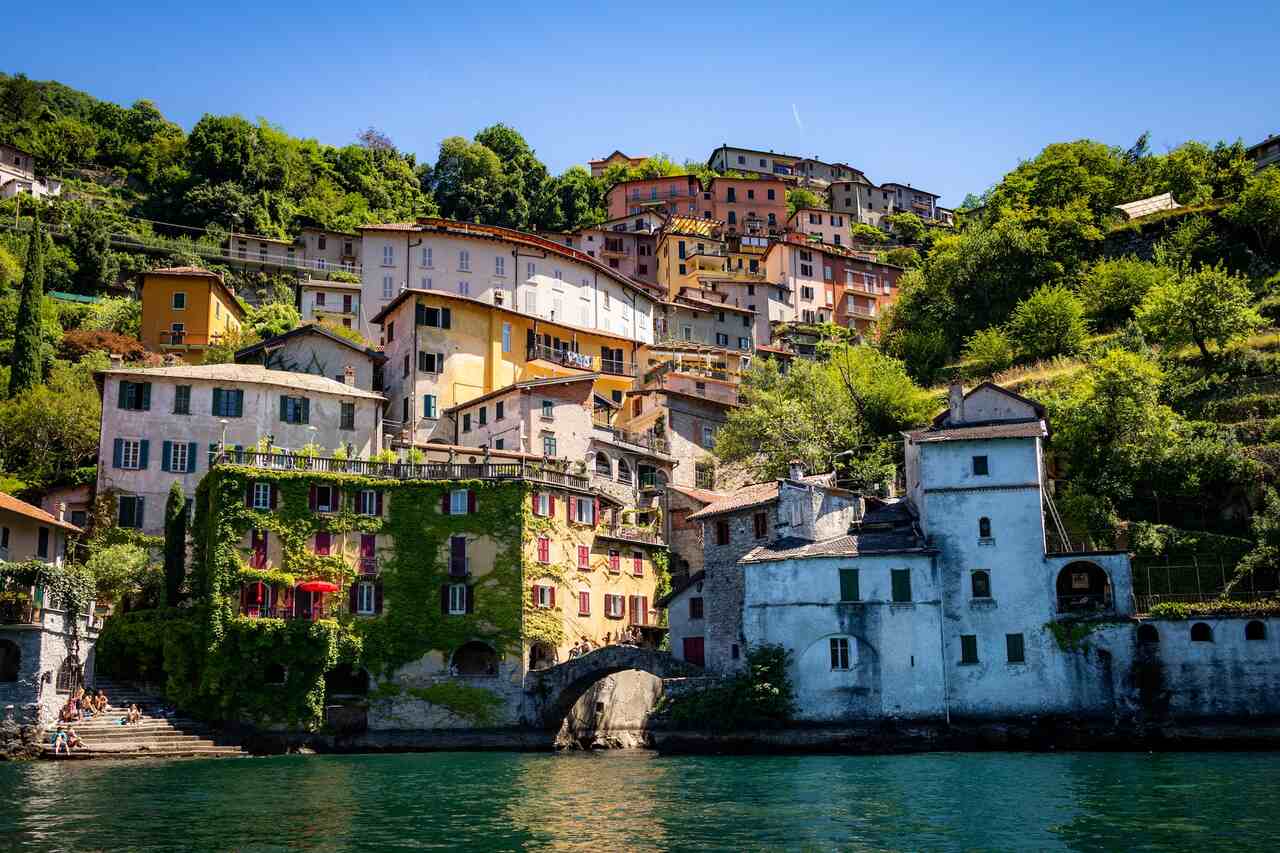
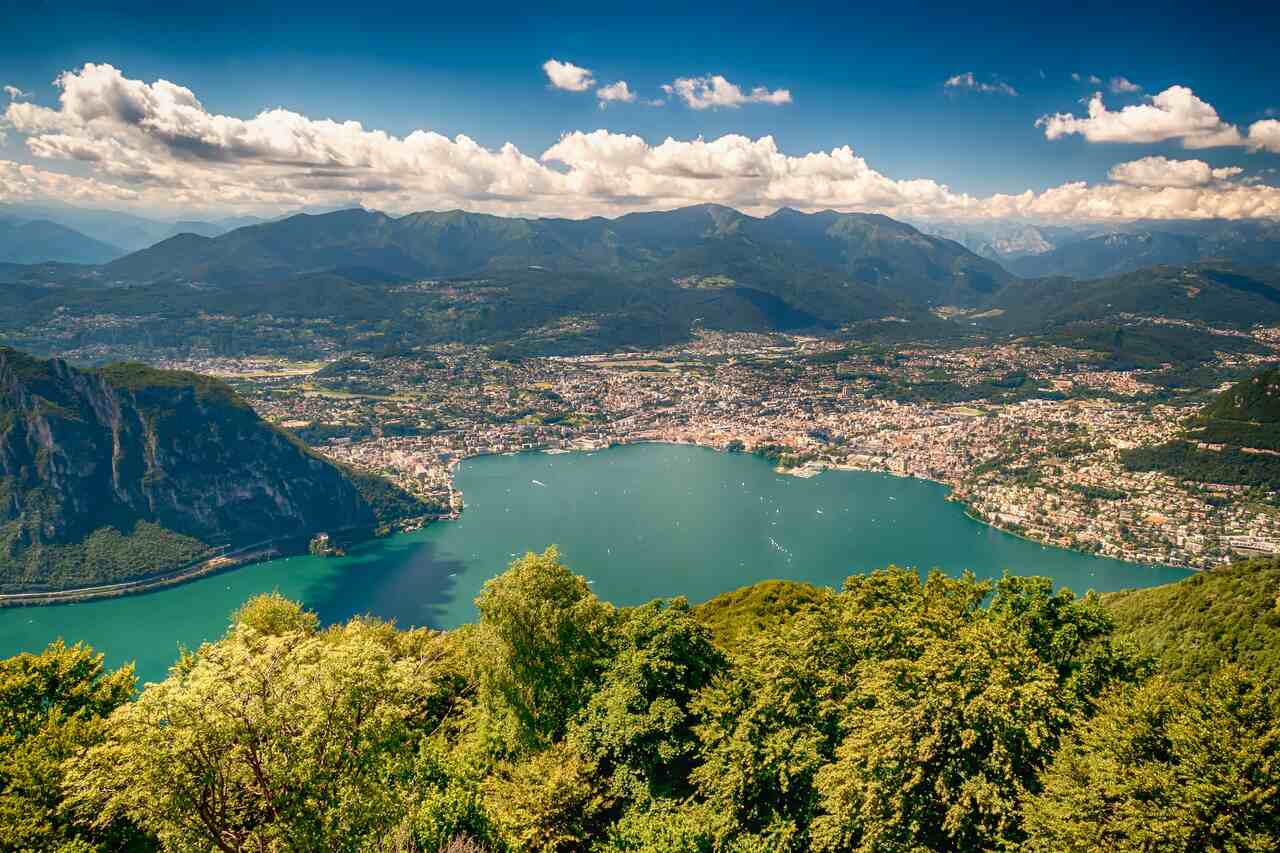
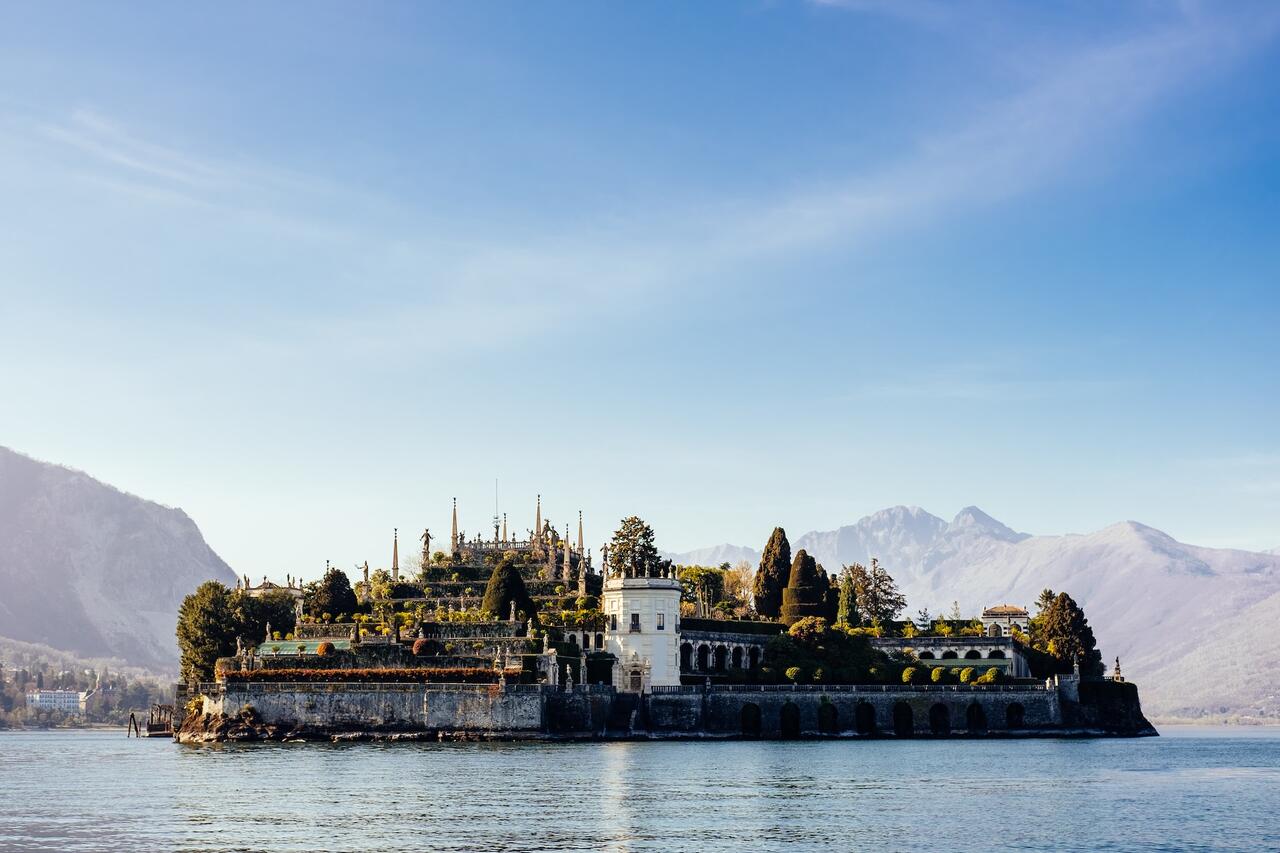
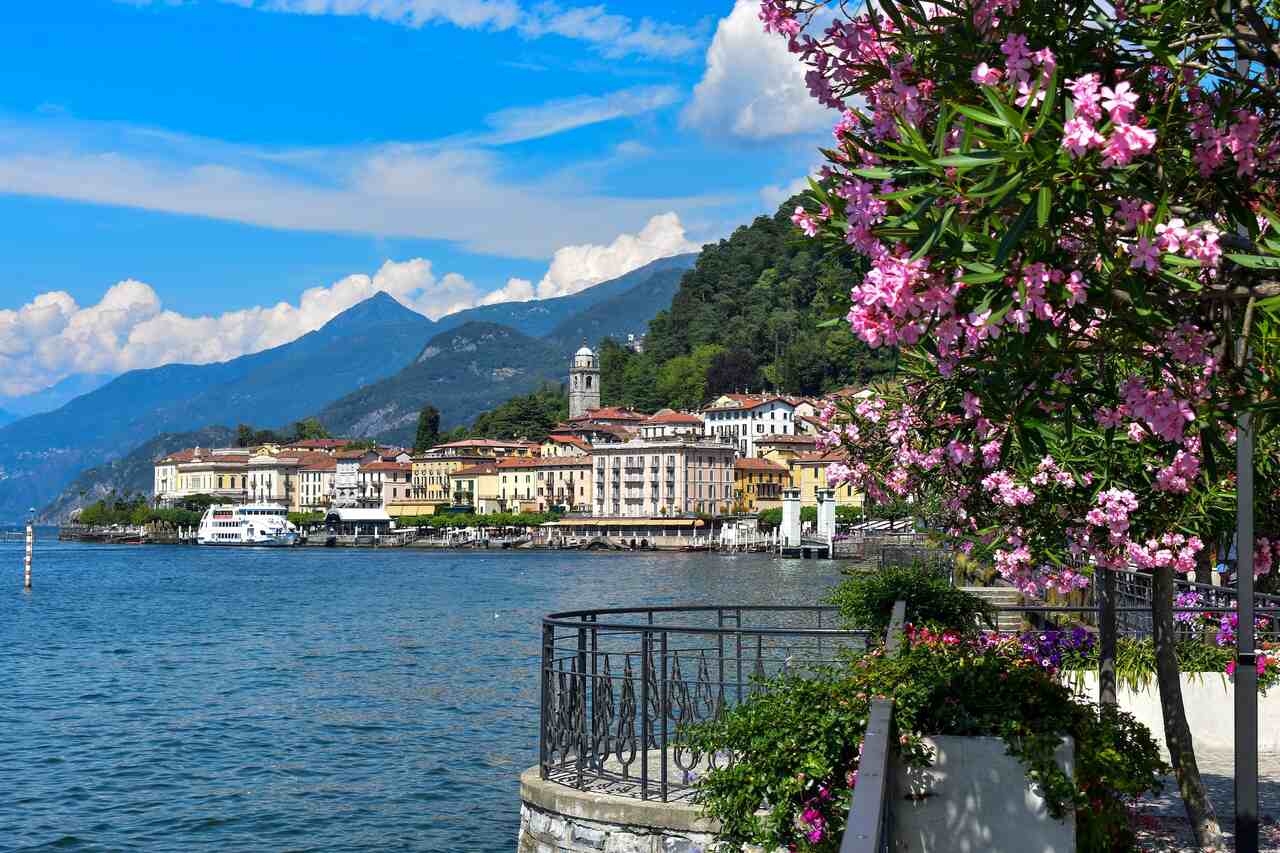
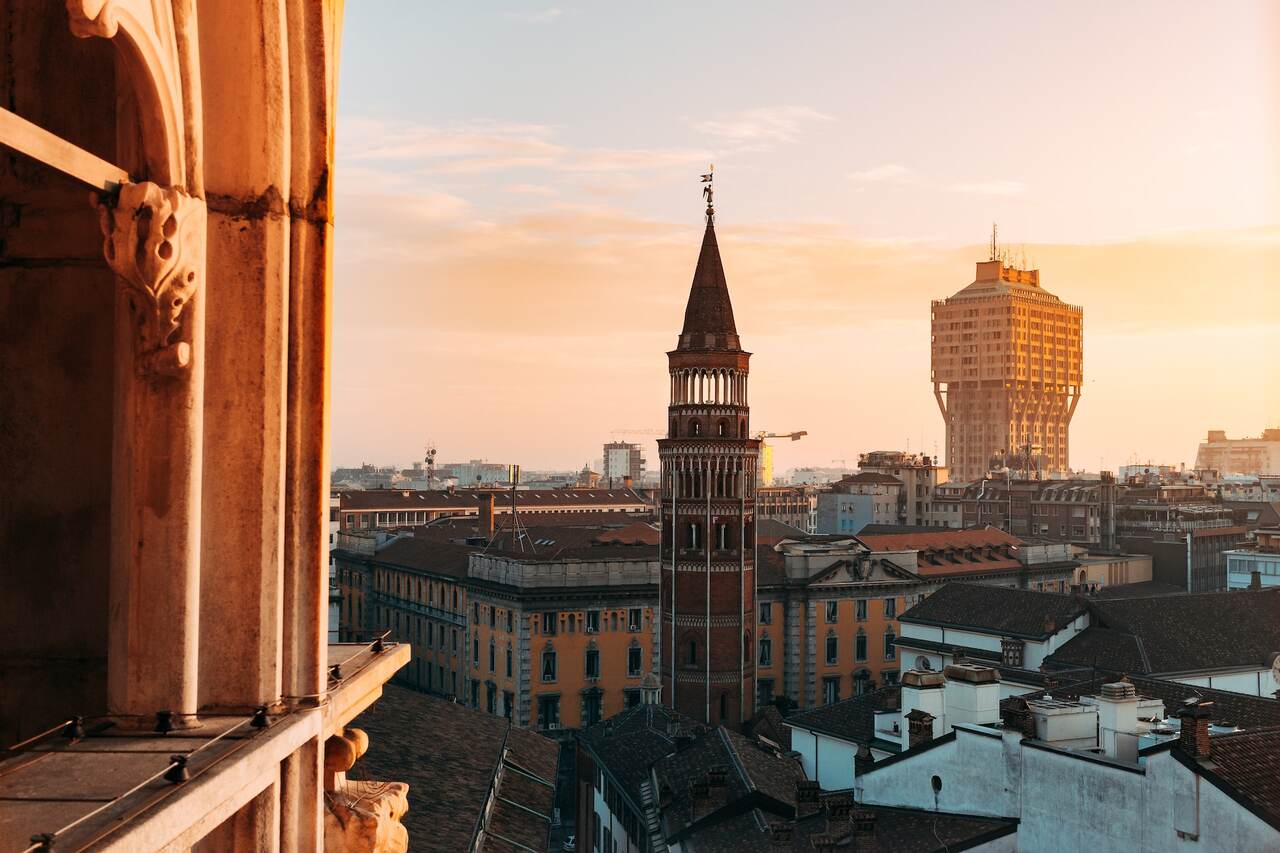









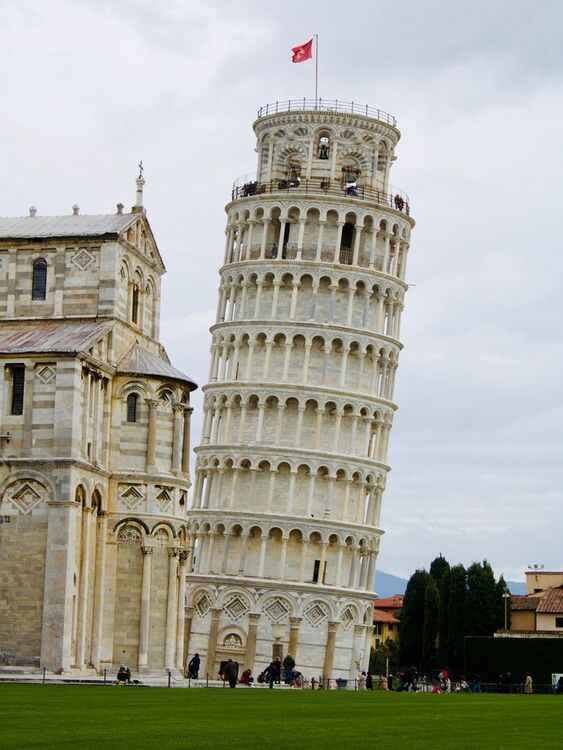

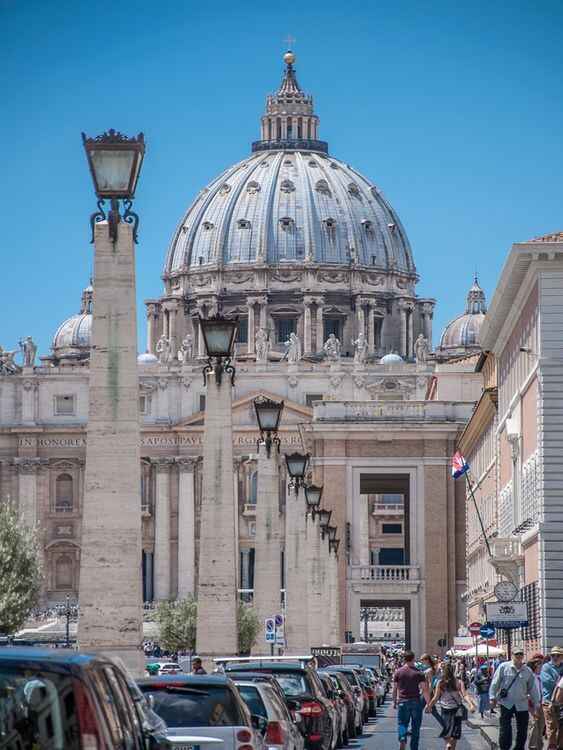
 Enquiry Now
Enquiry Now